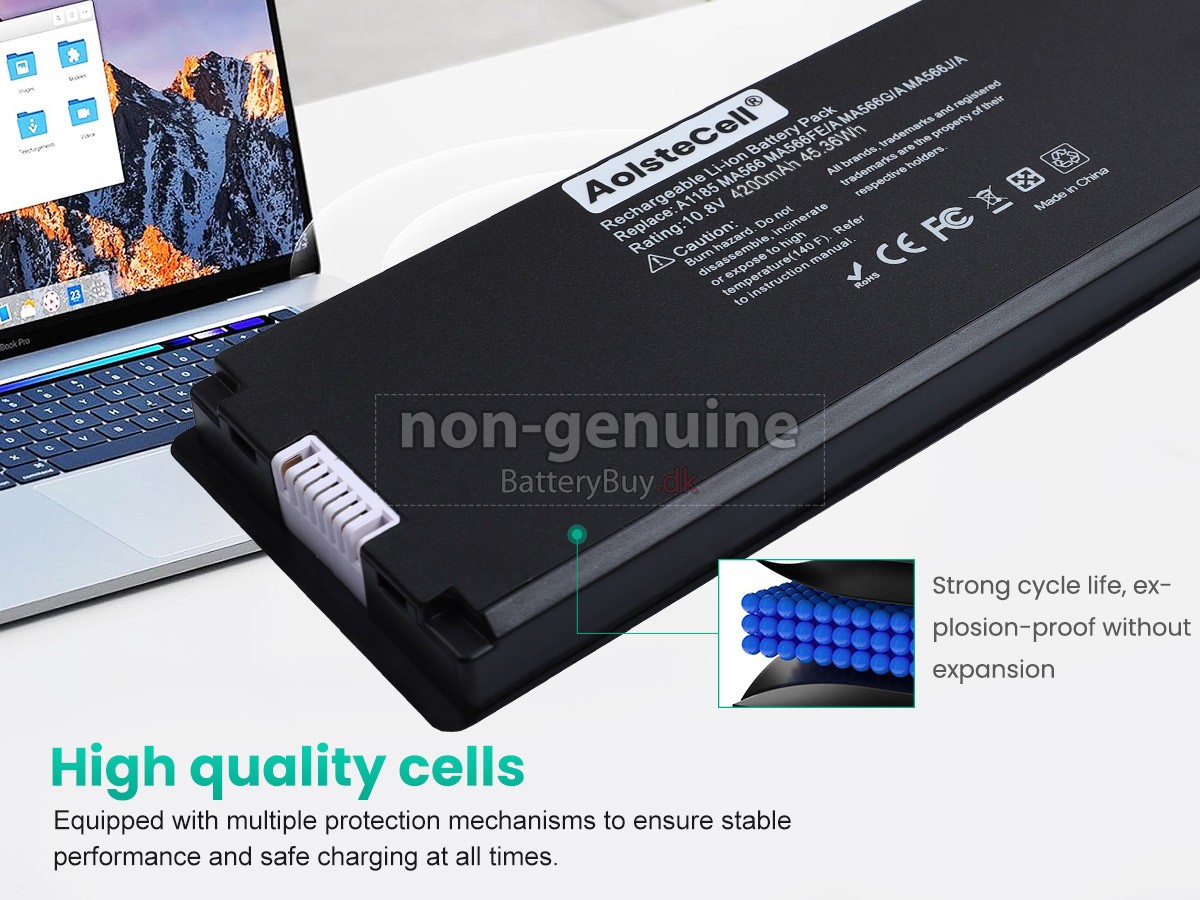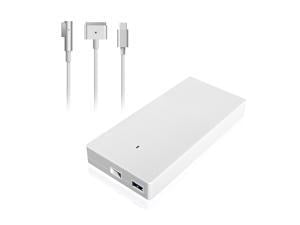Some people have to have the very latest. Some people still use Tiger. Some people have expensive applications in versions which run only on earlier versions of the Apple OSX operating system. On the other hand, each series of the A1181 MacBook has a 'minimum' and 'maximum' (earliest, latest) version of OSX which it can handle. Check your Macbook coreboot/libreboot compatibility -Every Macbook1,1 (A1181) or Macbook2,1 (A1181) is compatible. Also mention, it is complete waste of money getting Macbook1,1, as it only supports 32 bits and it needs first via hardware flash for run coreboot/libreboot.
To get the latest features and maintain the security, stability, compatibility, and performance of your Mac, it's important to keep your software up to date. Apple recommends that you always use the latest macOS that is compatible with your Mac.
Learn how to upgrade to macOS Big Sur, the latest version of macOS.
Check compatibility
If a macOS installer can't be used on your Mac, the installer will let you know. For example, it might say that your Mac doesn't have enough free storage space for the installation, or that the installer is too old to be opened on this version of macOS.
- Easily check which versions of mac OS, iOS, iPadOS, or watchOS are compatible with your Mac model or iDevice. Guide includes OS X 10.8.x to macOS 11.0.x.
- I'm dealing with my friend's Macbook White A1181. Original hard drive died a few weeks ago so we installed a brand new Samsung 840 EVO (256GB). I've read several tutorials on how to reinstall OSX on a new fresh hard drive without luck.
If you want to check compatibility before downloading the installer, learn about the minimum requirements for macOS Catalina, Mojave, High Sierra, Sierra, El Capitan, or Yosemite. You can also check compatible operating systems on the product-ID page for MacBook Pro, MacBook Air, MacBook, iMac, Mac mini, or Mac Pro.
Make a backup

Before installing, it's a good idea to back up your Mac. Time Machine makes it simple, and other backup methods are also available. Learn how to back up your Mac.
Download macOS

Before installing, it's a good idea to back up your Mac. Time Machine makes it simple, and other backup methods are also available. Learn how to back up your Mac.
Download macOS
It takes time to download and install macOS, so make sure that you're plugged into AC power and have a reliable internet connection.
These installers from the App Store open automatically after you download them:
- macOS Catalina 10.15 can upgrade Mojave, High Sierra, Sierra, El Capitan, Yosemite, Mavericks
- macOS Mojave 10.14 can upgrade High Sierra, Sierra, El Capitan, Yosemite, Mavericks, Mountain Lion
- macOS High Sierra 10.13 can upgrade Sierra, El Capitan, Yosemite, Mavericks, Mountain Lion, Lion
Your web browser downloads the following older installers as a disk image named InstallOS.dmg or InstallMacOSX.dmg. Open the disk image, then open the .pkg installer inside the disk image. It installs an app named Install [Version Name]. Open that app from your Applications folder to begin installing the operating system.
- macOS Sierra 10.12 can upgrade El Capitan, Yosemite, Mavericks, Mountain Lion, or Lion
- OS X El Capitan 10.11 can upgrade Yosemite, Mavericks, Mountain Lion, Lion, or Snow Leopard
- OS X Yosemite 10.10can upgrade Mavericks, Mountain Lion, Lion, or Snow Leopard
Install macOS
Follow the onscreen instructions in the installer. It might be easiest to begin installation in the evening so that it can complete overnight, if needed.
If the installer asks for permission to install a helper tool, enter the administrator name and password that you use to log in to your Mac, then click Add Helper.
Please allow installation to complete without putting your Mac to sleep or closing its lid. Your Mac might restart, show a progress bar, or show a blank screen several times as it installs both macOS and related updates to your Mac firmware.
Learn more
You might also be able to use macOS Recovery to reinstall the macOS you're using now, upgrade to the latest compatible macOS, or install the macOS that came with your Mac.
Update 2019-05-02: For those of you who want to install macOS 10.14 on an unsupported Mac,check this post.
I have a MacBook Mid 2007 (more technically named MacBook2,1) that officially can not be upgraded beyond Mac OS X 10.7 (Lion). It is however possible to install Mac OS X 10.9 (Mavericks) on it with quite good success and not too much effort.
I want to first write what does not work:
- Sleep mode – not working at all – leave on or shut down
- The build-in web camera – 'works' but not as it did in 10.7, I think
- YouTube-video (etc), works occationally (now worse than in 10.7, my experience)
I suggest you read the user comments to this post. A few helpful readers have shared their experiences.
What you need:
- A USB Memory, 8GB or larger
- Mac OS X Mavericks (i had the install/upgrade Application that I had myself
downloaded on another Mac, from App Store, when I upgraded it from 10.8 to
10.9. I always keep these for possible future use.) - SFOTT: I used version 1.4.4 which is currently the latest stable
- Audio/Video-drivers from (not here anymore, se comments below).
Warning, this is one of these horrible download pages where you don't know
where to click to get the right thing, and what gives you spyware. You
should get the file mac-mini-mavericks.7z. Discard anything else without
opening. The 7z-file can be opened with StuffitExpander, that already
comes with Maverick
Making a bootable USB-drive
You first need to use SFOTT to create your bootable USB-drive (it is called 'key' in SFOTT). You simply double-click on SFOTT on a Mac where you both have your Mavericks Install App and your USB-drive. SFOTT is a self guiding menu-driven application. It will take some time to make all the settings in SFOTT (it took me perhaps 15 minutes), but it was self-explanatory and not very difficult. Use the autorun mode to create the drive.
Recovery Scenario
When you install a Mac OS upgrade there is a risk your Mavericks system will not boot. When upgrading from 10.9.0 to 10.9.5 like I did, it will not boot. My impression (after reading different sources) is that this recovery is needed when upgrading from 10.9.0 (or 10.9.1 / 10.9.2) but not later. Nobody knows about 10.9.6 of course, because it is not out. Minor upgrades to applications or security upgrades should not cause need to recovery.
When Mavericks fails to start you need to 're-Patch' using SFOTT. I installed Mavericks on a separate partition, side-by-side with Lion, so when Mavericks failed to start my computer automatically started Lion instead and I could run SFOTT in Lion to re-Patch my Mavericks system.
If you can not do side-by-side you can start from your SFOTT-key (which you still have) and instead of installing Maverick you start the Terminal application. Find the SFOTT.app on the key, and find SFOTT.sh inside SFOTT.app. Run SFOTT.sh and you can re-Patch your broken Mavericks system. I did the entire procedure on my working Mavericks just to test it, and it seems fine.
There is if course no true guarantee that a future Apple upgrade will not break everything completely.
Installing Mavericks
Installation of Mavericks from the USB-drive is very standard. To start the computer from the USB-drive, hold down the 'alt'-key (not Apple-key, not ctrl-key) while starting the computer. Choose SFOTT and proceed normally. After about an hour you should have a clean 10.9.0 Mavericks with network/wifi working. Video will work, but with problems (try Safari, and you will see), and Audio will not work.
Upgrade Mavericks
I used App Store to upgrade Mavericks to 10.9.5. That works just fine, until Mavericks fails to start (I ended up in my old Lion system on a reboot, if you have no other system installed your computer with probably just not start). This is where you need to recover your system using SFOTT.
Fixing Audio and Video
The 7z-file I referred to above contains Audio and Video drivers. You run the application 'Kext Utility' and the you drag the contents of the folder Extensions into the Kext Utility, and it will install the drivers. There is a folder with 'optional wifi drivers', I have not installed those because wifi has been fine all the time for me.
The MacBook2,1 has Intel GMA950 Video, and there are no supported 64-bit-drivers for Mavericks. The drivers I suggest you to install are supposed to be drivers from a public beta of 10.6 (Snow Leopard) that Apple once released. They seem to work quite fine for me though. And not installing them is worse.
I suggest you upgrade to 10.9.5 before fixing Audio and Video. I guess a later Apple-upgrade could break Audio and Video and require you to reinstall drivers.
Problems booting the SFOTT key
I first created the SFOTT key using the SFOTT beta (that is also supposed to work with Yosemite), and I used System Preferences/Startup Disk (in Lion) to start the installion. This failed and my computer just started up in Lion.
I then created the SFOTT key using 1.4.4, AND i restarted the computer holding down the alt-key. This worked. This key also later worked when I used System Preferences/Startup Disk (in Mavericks) to choose startup drive.
Driver Problems
There are open source Audio drivers called VoodooHDA. I installed those ones with success, but audio volume was low. I tried to fix with no success. Later I found the drivers I referred to above and that I recommend.
I found another download for what was supposed to be the same Video Drivers. But the Kext-utility did not work, and I installed the drivers by copying them directly into /System/Library/Extensions and this gave me a broken unbootable system. I don't know what went wrong, but I recommend the drivers I linked to.
Video/YouTube Performance
Some videos seem to play perfectly, others dont. I had problems with 10.7 too.
Background and about SFOTT
There are several Apple computers that can run 10.7, that have a 64-bit processor, but that can not officially run 10.8 or later. There are a few issues:
A1181 Os Compatibility Guide
- Video Drivers – and in the case of my MacBook2,1 the unofficial ones mentioned
above may be good enough - 32 bit EFI. Even though the computer has a 64 bit processor, the EFI, the
software that runs before the Installer/Operating system, is 32 bit, and not
capable of starting a 64-bit system. - Mavericks does not believe it can run on this hardware.
Macbook A1181 Os Compatibility
As I understand it SFOTT installs a little program that 32 bit EFI is capable of starting, and that in turn is capable of staring a 64 bit system. Also, SFOTT patches a few files so Mavericks feels comfortable running on the unsupported hardware.
A1181 Os Compatibility Chart
You can do all of this on your own without SFOTT. Descargar chrome para windows 7 32 bits. SFOTT 'just' makes this reasonably easy.
There are plenty of forums, tools and information about running Mac OS X on unsupported hardware (also non-Apple-hardware: a Hackintosh). Those forums of course focus a lot on problems people have.
Yosemite
It is supposed to be possible to install Yosemite in a similar way. SFOTT has a beta release for Yosemite. For my purposes going to Mavericks gave me virtually all advantages of an upgrade (supported version of OS X, able to install latest Xcode, etc).
Conclusion
In the beginning of 2015, it is not that hard to install Mavericks on a MacBook Mid 2007, with a quite good result. I have pointed out the tools and downloads you need and that will work.
